
Plastic produces CO2 when incinerated as waste and gravely impacts the environment in landfills. Efforts have come a long way in advancing the recycling of plastics, but the tendency to have inconsistent quality in products using recycled materials still remains an issue. Ryotaro Shimada and Daisuke Yagi, researchers from the Hitachi, Ltd. Research & Development Group, have developed Artificial Intelligence (AI) to stabilize the quality of molded parts when fabricating plastics from recycled materials.
(May 8, 2023)Shimada:I discovered my strong interest in chemistry and the fun of research as a student. In graduate school, I majored in polymer chemistry including the synthesis of plastics.
I chose polymer chemistry as my research theme enticed by the idea of creating a new material never seen in the world before. I got a taste of the excitement of opening up new frontiers through my research in chemistry.

As I looked for work, I was adamant that I wanted to be involved in research in which I could capitalize on my knowledge founded in chemistry where I would see the faces of end users. I took the offer from Hitachi because the company deals with such a broad range of research fields. From the moment that I joined the organization, I knew Hitachi was a place where I had the potential to open up new frontiers in any field.
Yagi:In my case, science was always a part of the culture in my home. My parents and family always actively helped with things like my independent summer research projects for school. I remember I hated it at first, but I gradually came to love science as I won many different awards by presenting my independent and other research projects.
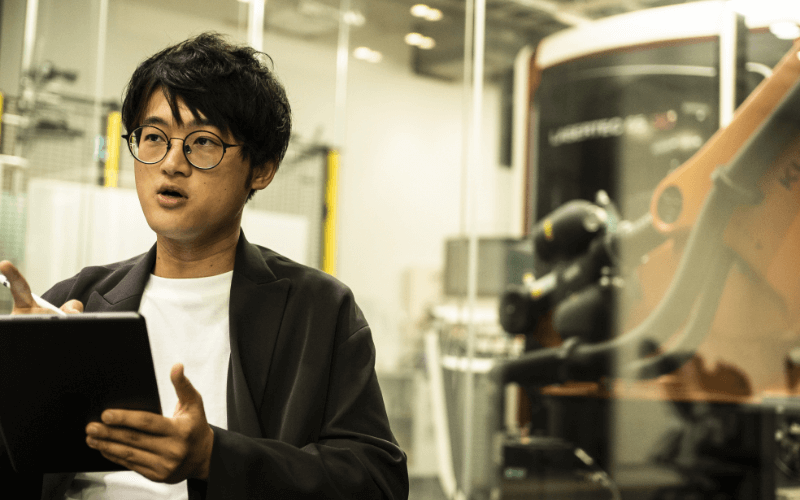
In high school, I found physics and math interesting because the right answer was always the same no matter who solved the problem or when. I enjoyed studying the sciences because anyone can engage in the debate fairly, regardless of who they are or their social standing. I thought that was cool. I majored in physics as a university student. In graduate school, I became part of the elementary particle physics laboratory. We conducted experiments on the origins of the universe and matter by precisely measuring elementary particles using the proton accelerator at the J-PARC in Ibaraki Prefecture.
The basic sciences like elementary particle physics are more about exploring the truth of the natural world than directly contributing to society. Even if these pursuits do not benefit society immediately, there is no question that this basic research makes the applied sciences possible. To precisely measure elementary particles, we’ve had to improve the accuracy of measurements in various ways by using ingenuity to eliminate noise from experimental equipment or by increasing efficiency through data analysis. Applied research in a corporate environment has to seek out innovations to lower costs and enhance productivity. This is actually true of basic research too.
As I was job hunting, I felt Hitachi was the right fit for me with my background because it carries out research in everything from Artificial Intelligence (AI) and Information Technology (IT) to Operational Technology (OT). The atmosphere employs the distinct powers of human resources proficient in IT as well as those great at physics. As I listened to people, I learned about the company’s tradition of valuing its researchers. That is why I applied and took a research position in production technology. Another reason why I chose Hitachi was because its research not only elevates people to new heights as researchers but also helps overcome social issues.
Shimada:I was involved with metal and plastic bonding technologies for the first two years after I joined Hitachi in 2011. Generally, metal and plastic do not adhere to one another. I had been researching elemental technologies to facilitate this bond by using a chemical process on both materials.
After that, I worked on the development of plastic molding technology for application in a broad range of fields from in-vehicle sensors to semiconductors. The key to realizing high-performance products relies on whether simulation can better reflect material properties to provide feedback for material composition and processes. These efforts developed a simulation method to do this by not only modeling the chemical but also the physical behaviors.
Yagi:I joined Hitachi in 2018 and engaged in research to digitalize processes for high-functionality films. They were extremely thin films manufactured through many different processes using rollers. At the end of the production line, the films are inspected for defects and other problems. We developed a system to identify the cause of the detected defects and recommend countermeasures by analyzing data obtained from sensors built into each process of the production line and records of past countermeasures.
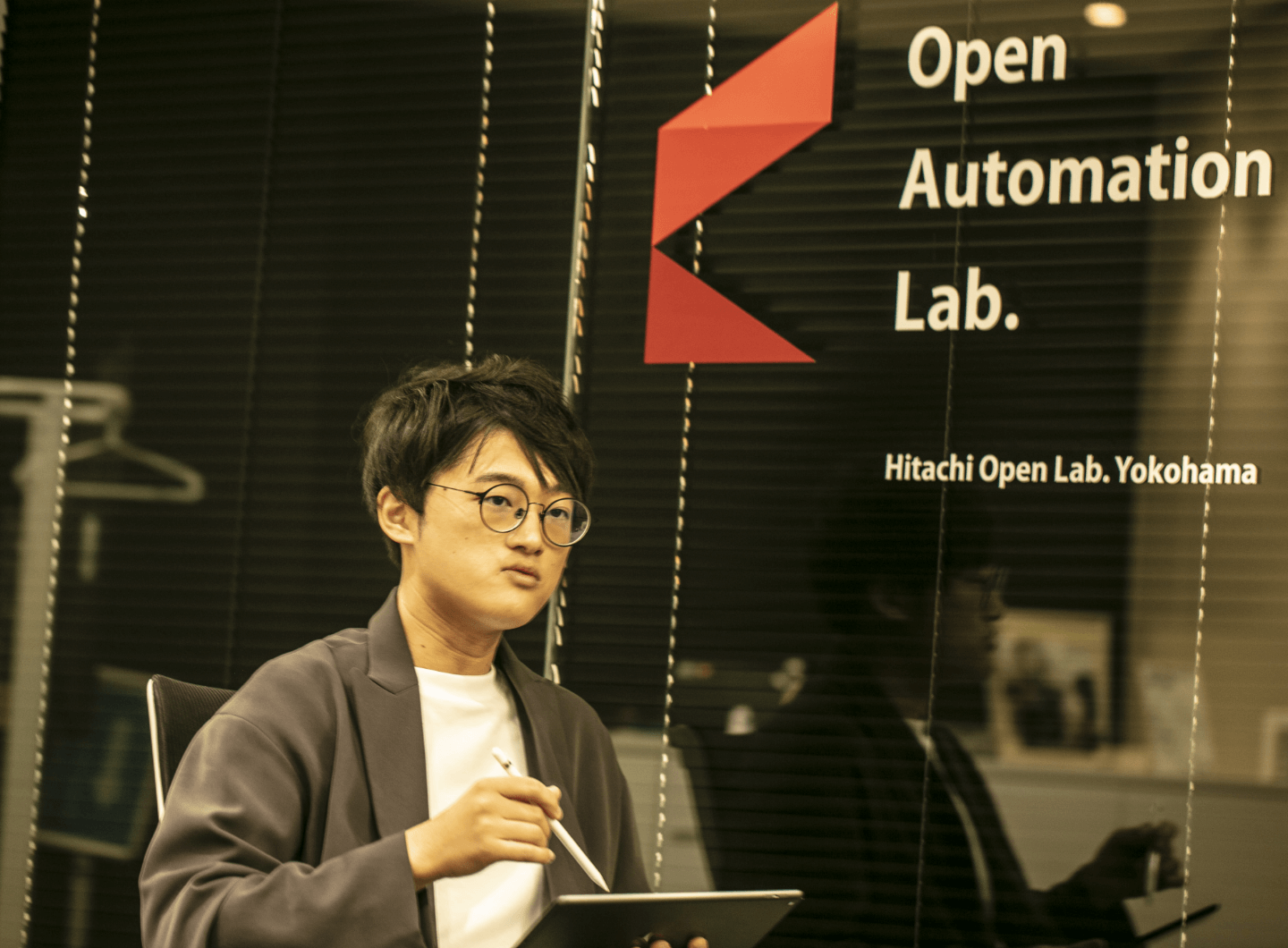
The identification of the cause and selection of appropriate countermeasures require a lot of time due to the numerous potential causes of defects. However, this system automates that process to recommend measures, whether changing filters or replacing base films, to reduce production down time. Up until now, my fifth year at Hitachi, I have been engaged in this type of research related to the use of data. I have worked to expand the application of my research to other areas like error detection in metal processing and determination of the cause of semiconductor process errors by going to see manufacturing sites for myself. Primary data obtained on site and from the actual materials, products, and process conditions is the most important information to solve on-site issues.
Shimada:In fact, some prior development became the basis for our research topic today. Injection molding melts plastic materials using heat to inject into a mold to form a part. We developed a compensation technology to deal with errors (differences between individual machines) in the shape of molded parts caused by the differences between molding machines. To achieve the same quality across molded parts even when using different injection molding machines, this technology obtains variations between the molding equipment using sensing data from in-mold sensors. The calibration of process conditions based on this error data achieves consistent quality between molded parts.

We completed this first stage of development in 2019. As the team thought about what to do next, I toured K Show (K 2019), the world’s largest trade fair for plastics and rubber held in Dusseldorf, Germany. I went intending to focus my trip on the digitalization and other advancements made in injection molding technologies, but I saw efforts into realizing a circular economy everywhere throughout the show. I was shocked by the fervent discussion at the exhibition and truly felt the momentum behind the direction the world is heading. I knew that we had to respond to this trend immediately. That’s why Hitachi began its research into the proficient use of recycled plastics based on past technological development.

Yagi:My department is underway with projects in a wide variety of research fields. Shimada and I work in the same office. I learned about Shimada’s current research project at a departmental meeting where we share the technology that we are all working on. As Shimada had a desk near me at the time, I decided to talk to him a bit about it.
Shimada: I was writing a program at my desk when Yagi engaged me in conversation. He told me he would like to share information because he was working on a program utilizing AI. I suddenly realized that I had an expert in AI and data science right next to me. However, I still had not considered working together at the time.
Yagi:I hypothesized that my strengths in data science would fit very well with research into recycled plastics. That is the real reason why I approached Shimada. Thanks to my interest and that conversation, I joined Shimada’s project in 2020. This was my third year at Hitachi. I had simply hoped the research I had done on my first and second year would be useful. I was surprised such a casual conversation would lead to a specific job.
Shimada:Recycled plastic materials use spent plastics that have been collected and sorted as raw materials. The properties of these recycled materials are inconsistent because the properties of the waste plastics collected from waste products differ in age and manufacturer of those products.
As our research progressed, I discovered the three main problems with using recycled plastics.
First, recycled materials often have material properties less effective than virgin materials.
Second, recycled materials often have a lower material quality resulting in major inconsistencies, such as the weight and mechanical properties of molded parts.
Third, degradation and contaminates cause inconsistencies in the appearance quality of molded parts.
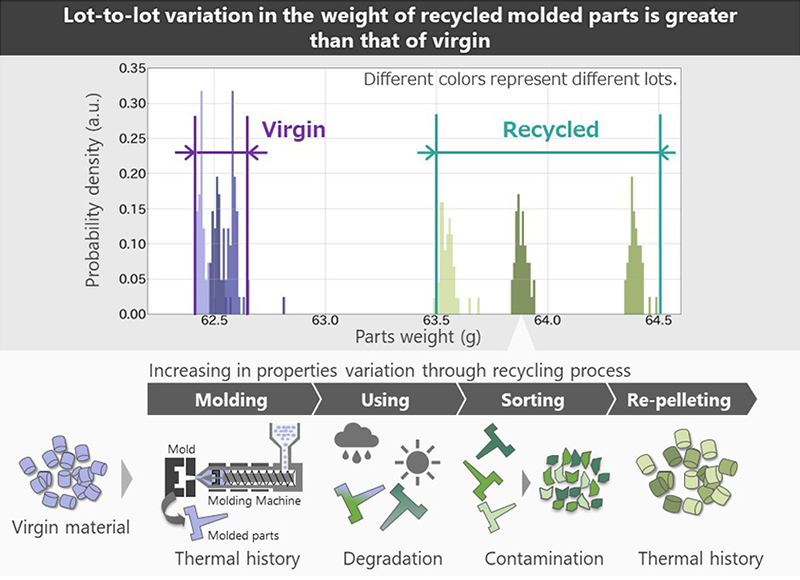
The research that I am doing with Yagi aims to address the second issue related to a lower material quality. We developed technology to facilitate use of materials with varying quality. We should be able to stabilize the quality of recycled materials if we could realize a closed loop for waste plastics collected from only one product when producing recycled materials. However, the use of recycled materials derived from a variety of products is necessary due to the limitations in the volume of materials available from one specific product source. That is why our main theme for the project was production technology to create products with consistent quality even when using a variety of recycled plastics materials.
Yagi:It would be great to gather only quality materials, but that would increase the costs. The development of this technology to mold products with consistent quality even when using materials with inconsistent material properties expands the materials available for use. I believe this technology has the potential to invigorate the recycled plastic market by broadening its applications.
Yagi:Injection molding using virgin materials under the same conditions keeps weight fluctuations—an indicator of product quality—within a minimal range. Injection molding using recycled materials even under the same conditions results in lot-to-lot weight fluctuations. On the other hand, these circumstances give shape to the idea that uniform quality is possible by creating the appropriate molding conditions for each lot according to the differences in the recycled material properties.
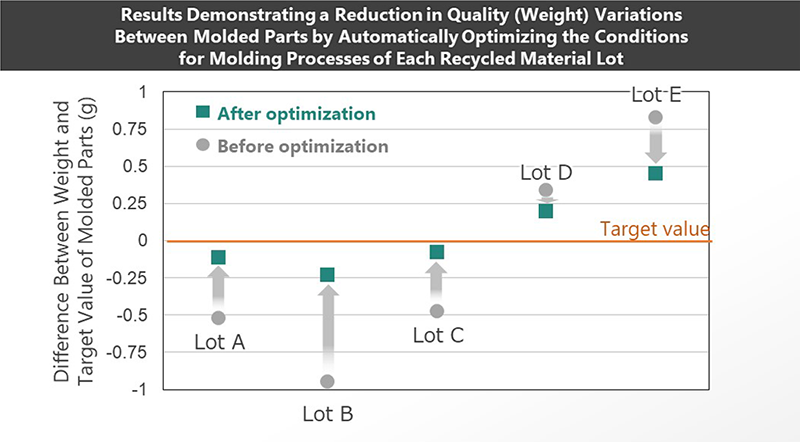
This led to the development of AI for automated process optimization of injection molding conditions. Jumping right to the outcome, the technology that we developed has been able to demonstrate the effectiveness of optimizing molding conditions for each lot to mitigate fluctuations and realize molded products closer to the target weight for each lot. Our technology is helping understand how to realize process optimization for every lot.
The new automated AI process optimization technology consists of two modes. The training mode runs before mass production and the inverse analysis mode runs during mass production.
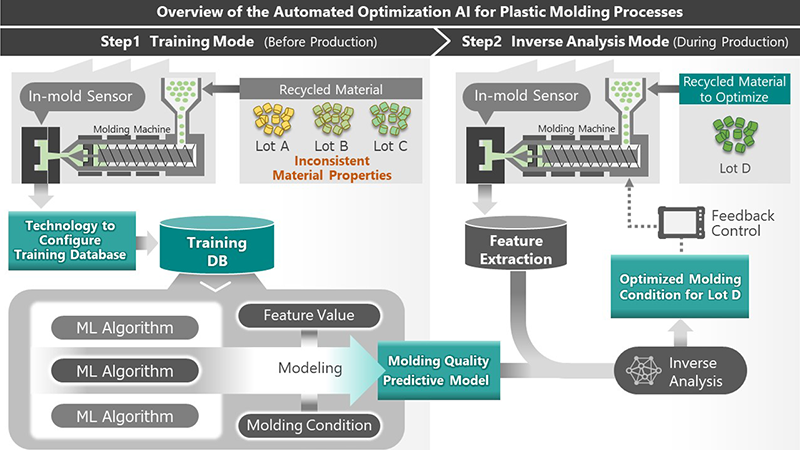
First, in the training mode, multiple lots are processed using a mold with built-in sensors to build a training database that shows the relationship between the (1) molding process conditions, (2) molded part quality (weight), and (3) recycled material properties (features) obtained from sensing data corresponding to the behavior of resin in the mold. Next, a prediction model is built to estimate the quality of molded parts from the recycled material properties and molding process conditions. This approach automatically selects the best algorithm from multiple machine learning algorithms.
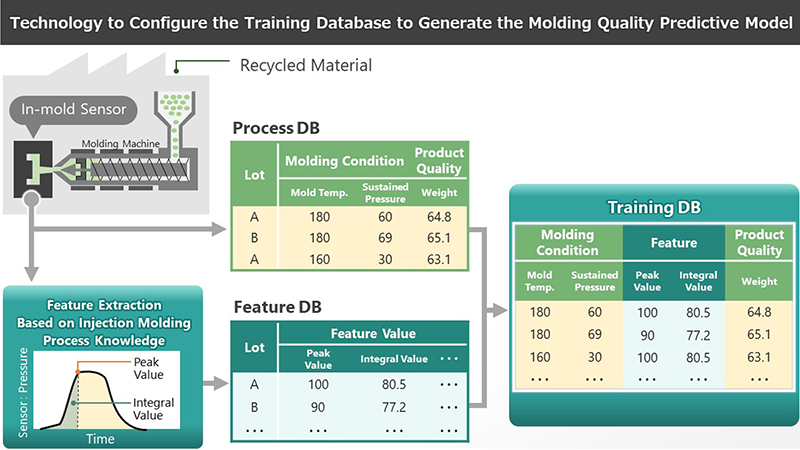
The inverse analysis mode is used during mass production. A new lot of recycled plastics is molded under specific molding process conditions and recycled material features are extracted from the sensing data obtained by the in-mold sensors. The approach uses the inverse analysis to obtain the optimal molding process conditions to achieve the target quality based on the material features.
Let me explain by coming at this from a different direction. The formula below shows an overview of this automated AI optimization technology.
Quality = f (Molding process conditions, features of the recycled material)
The training mode first defines the relationships between the quality, molding process conditions, and recycled material features represented in this formula using technology to configure a training database. This approach is based on expert knowledge of injection molding processes and unique technologies to extract the recycled material features from various in-mold sensor data. Next, a machine learning algorithm creates a quality prediction model, represented by function f in the formula. The AI automatically selects the optimal function f from the training data. Everything up to this point is done by the training mode.
In the inverse analysis mode used during production, the required quality and function applied for the quality prediction model are both predetermined. Meanwhile, the features of an unknown recycled material can be obtained by running an injection molding test. When the quality, function f, and recycled material features have been specified, the optimal molding process conditions can be obtained with an inverse analysis.
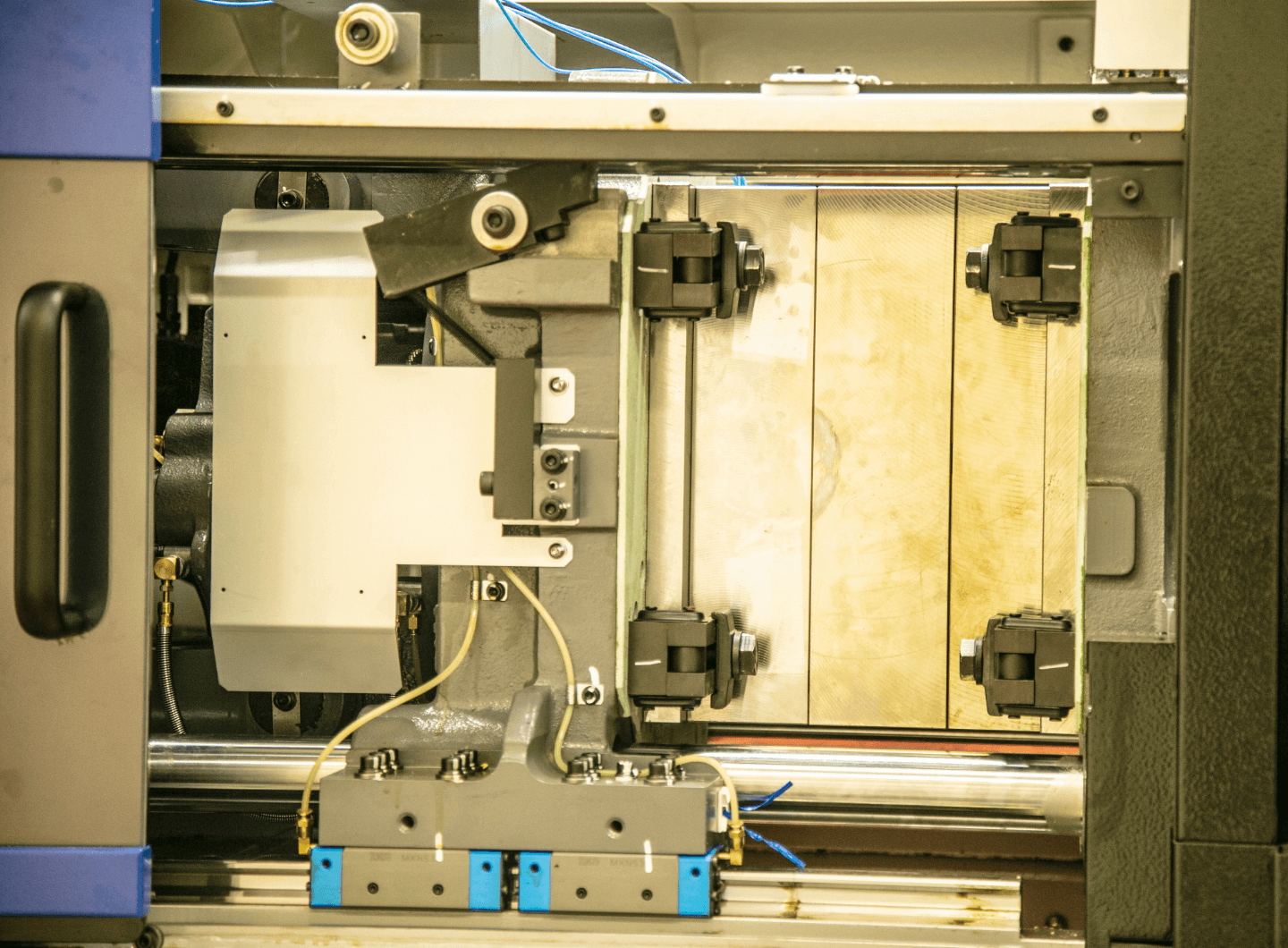
Shimada:The technology that we developed is made possible through the proper combination of many different elements. For example, the development of the database configuration took advantage of knowledge largely in three areas.
First, we had to figure out how to select the parameters for the molding process conditions. There are more than 100 parameters used in injection molding machines when all the detailed settings are included. We have narrowed them down to only the important parameters.
Second was the extraction of material features. We devised ways to obtain features as numerical values that quantitatively express the properties of the resin from the sensing data.
Third, we leveraged expertise to boost testing efficiently. Testing all possible combinations of material properties and conditions can be extremely tedious because it requires numerous tests. The use of Design of Experiments enables more efficient data acquisition and reduces the number of tests.
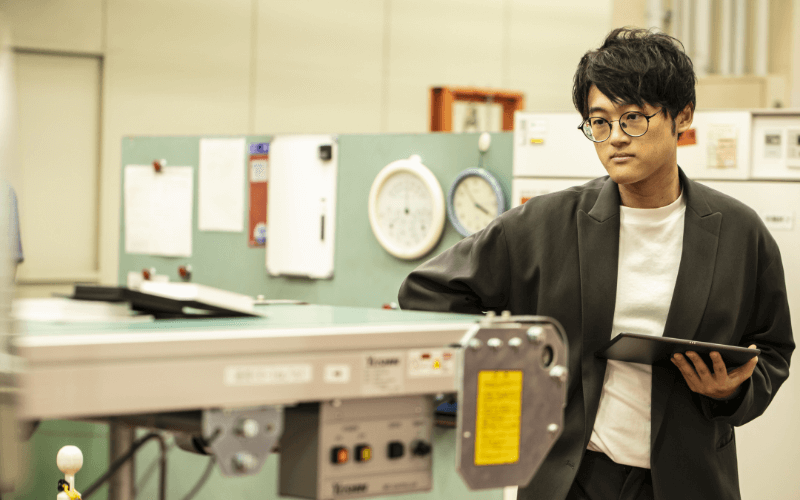
In addition, we capitalized on expertise about where to mount sensors. The options for where to place sensors in the molds and runner, which is the channel for the resin, are infinite. The physical quantity to obtain also varies the optimal position. That is why the knowledge for selecting the proper position to place sensors from all of these options is essential.
Yagi:The technology that we developed is an integration of multiple elemental technologies, all of which are vital. I believe Hitachi’s unique strength is that we have been able to successfully develop this production technology by combining a broad range of know-how and elemental technologies not only in IT but also in OT such as plastic molding processes.
Shimada:I view zero emissions to advance decarbonization, zero waste to realize a circular economy, and zero environmental impact to coexist with nature as our goals. Effective use of recycled materials to produce new products from waste plastics could be a solution to the social issue of the release of plastics to the environment.
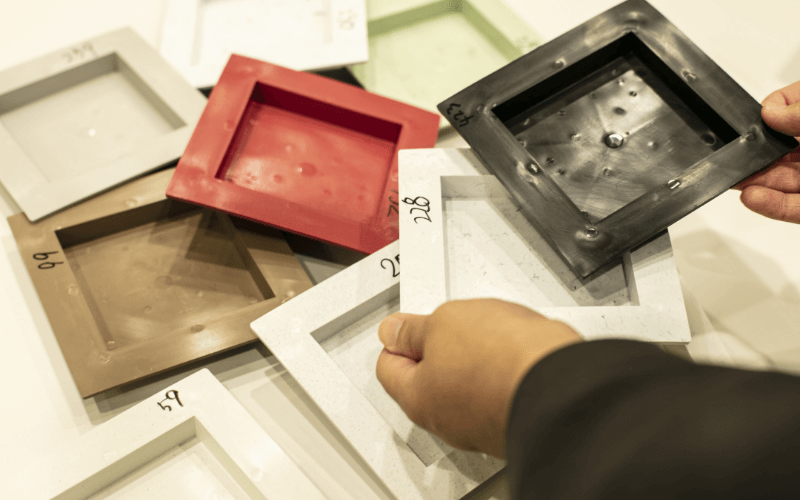
Today, we are required to realize resource circulation through a circular economy approach, not to mention the requirements for carbon neutrality. The use of waste plastics as recycled plastics to mold products should be extremely effective as a way to circulate resources.
Yagi:Technologies that use various recycled materials as raw materials should help improve cost benefits and strengthen resilience from a procurement standpoint too. Our technology has the capability to provide both environmental and economic value, which I feel can contribute to the realization of a sophisticated circular economy.
Shimada:Technology meant to protect the environment never catches on if it has cost disadvantages. The technology that we developed offers a solution that facilitates the use of recycled materials with different material properties. This is extremely advantageous because it eliminates the conflict in choice between either environmental or economic benefits. As shown by the technology that Yagi and I developed together, I hope to solve social issues through collaboration with many people in the future too.

Daisuke YAGI
Researcher
Circular Industries Research Department
Production Engineering and MONOZUKURI Innovation Center
Center for Sustainability
Hitachi,Ltd. Research & Development Group
I would like to introduce two books: Originality Doesn’t Come from Nowhere: The Principle of Layman Ideas and Expert Execution (Dokuso wa Hiramekanai—Shiroto Hasso, Kuroto Jikko no Hosoku; Takeo Kanade; Nikkei Inc.) and Analects and Arithmetic in Modern Language (Gendai Goyaku Rongo to Soroban; Eiichi Shibusawa; Modern Translation by Atsushyi Moriya; Chikumashobo Ltd.).
When I was a university student, I read and was profoundly moved by The Principle of Layman Ideas and Expert Execution written by Takeo Kanade, a computer scientist who is an expert in computer vision and robot engineering. This book stresses the importance of coming up with simple and straightforward ideas like a layperson and putting those ideas into action steadily like an expert. When I have advanced my career and gained a wider view of things, I would like to read this book again in the future to return to those roots.
In Eiichi Shibusawa’s Analects and Arithmetic, I came to hold the value that what should be done and what should not be done are equally important in pursuing ethical behavior. I hope to maintain this sense of morality, especially in this time when advances in technology have allowed us to do so much more.
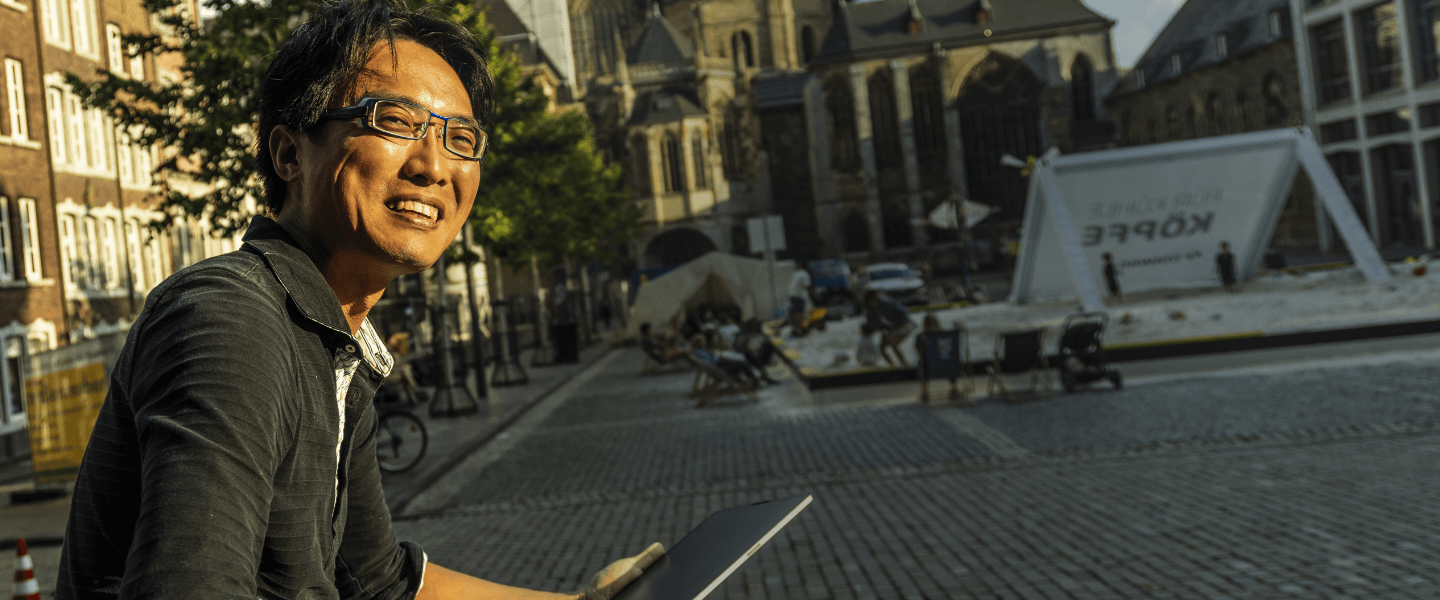
Ryotaro SHIMADA
Chief Researcher
Circular Industries Research Department
Production Engineering and MONOZUKURI Innovation Center
Center for Sustainability
Hitachi,Ltd. Research & Development Group
I would like to recommend The Innovator’s Dilemma (Clayton M. Christensen; Harvard Business Review Press) which explains how outstanding companies can do everything "right" and still lose their market leadership – or even fail. One famous example of this are the companies who held the top share in the hard disk drive industry. These established companies overlooked the disruptive innovation that was pioneering solid state drives, which were not seen as a rival at the time, and continued their efforts to increase the performance of hard disk drives. I believe the same thing can happen with recycled plastics. We are focused on mechanical recycling at present, but in the future we may use many bioplastics as well as chemical recycling. Rather than ignoring these technologies due to high costs, I think access to an information network is essential to determine when these new technologies will come.